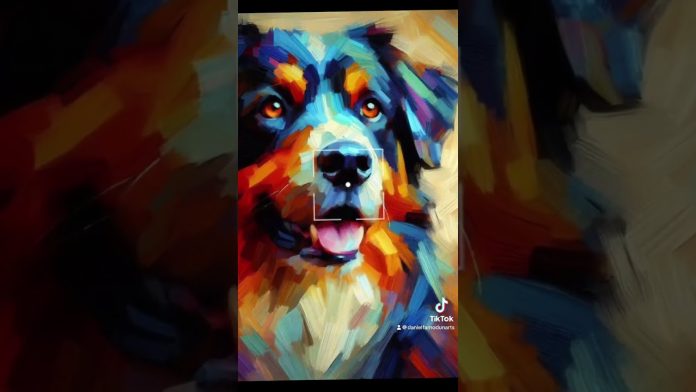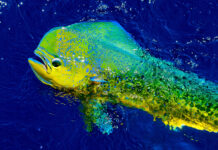Artistic expression through portraiture offers a unique opportunity to capture the personality and essence of a subject. Dogs, with their boundless energy and distinctive characteristics, make for captivating subjects in portrait painting. This article will guide you through the process of creating a portrait of a dog in a bold impressionistic painted style. We will explore the principles of impressionism, techniques for capturing movement and emotion, and tips for infusing your artwork with vibrant colors and dynamic brushwork.
1. Understanding Impressionism
Before diving into your painting, it’s essential to grasp the fundamental principles of impressionism.
- Focus on Light and Color: Impressionist artists aimed to capture the effects of light on their subjects. In your dog portrait, consider how different lighting conditions can influence the colors and shadows on your dog’s fur.
- Emphasize Brushwork: Impressionism is characterized by visible brushstrokes that create texture and movement. Instead of blending colors smoothly, embrace bold, expressive strokes that convey energy and spontaneity.
- Capture the Moment: Impressionist painters often sought to depict a specific moment in time, conveying the mood and atmosphere. Think about the dog’s posture, expression, and surroundings to evoke a particular feeling in your portrait.
2. Selecting Your Subject
Choosing the right dog for your portrait is crucial to capturing the spirit of your artwork.
- Consider Personality: Select a dog with a distinctive personality or expression that resonates with you. Whether it’s a playful puppy or a wise old companion, the subject’s character will inform your artistic choices.
- Photographic Reference: Take several photographs of the dog in different poses and lighting conditions. This will provide you with valuable references to guide your painting process.
3. Planning Your Composition
A well-thought-out composition is key to a successful portrait.
- Determine the Angle: Choose a perspective that highlights the dog’s features. A close-up of the face can emphasize expressions, while a full-body shot can showcase movement and stance.
- Create a Sketch: Lightly sketch the dog’s outline on your canvas, focusing on proportions and key features. This preliminary step will help you establish the layout before adding color.
- Consider the Background: Think about how the background complements the dog. An abstract or softly blended background can enhance the focus on the subject while maintaining the impressionistic style.
4. Choosing Your Color Palette
Selecting the right colors is vital for achieving a bold impressionistic effect.
- Embrace Vibrant Hues: Impressionism often uses bright, saturated colors. Select a palette that reflects the dog’s fur, eyes, and surroundings while incorporating complementary colors to create contrast.
- Experiment with Color Mixing: Use a limited palette and mix colors on your palette to create different shades and tones. This technique will help you achieve a more cohesive look in your painting.
- Incorporate Unexpected Colors: Don’t shy away from using unconventional colors to depict shadows and highlights. For example, using purples or blues for shadows can add depth and interest to your portrait.
5. Painting Techniques
With your composition and color palette ready, it’s time to start painting.
- Layering Colors: Begin with a base layer of color to establish the dog’s form. Use broad strokes for the background and larger areas of the dog’s body. Gradually build up layers, adding details and texture.
- Use Dynamic Brushstrokes: Employ various brush techniques to convey movement and texture. Short, choppy strokes can depict fur, while longer, sweeping strokes can represent the background.
- Focus on Highlights and Shadows: Pay attention to the play of light on the dog’s fur. Use lighter colors for highlights and darker tones for shadows, creating a sense of depth and dimension.
- Let Go of Perfection: Embrace the spontaneity of the impressionistic style. Allow your brush to express movement and emotion, even if it means straying from perfect realism.
6. Adding Final Touches
As you near completion, take a step back and assess your painting.
- Evaluate Composition: Check the balance of your portrait. Ensure that the dog remains the focal point while the background enhances the overall composition.
- Refine Details: Add finer details where necessary, such as the sparkle in the dog’s eyes or texture in the fur. Use smaller brushes to create these effects without losing the boldness of the overall style.
- Consider a Signature: Once you’re satisfied with your portrait, sign your name. A signature adds a personal touch and marks the completion of your work.
7. Displaying Your Artwork
Once your portrait is finished, consider how to showcase it effectively.
- Frame It Elegantly: Choose a frame that complements the style of your artwork. A simple frame can enhance the bold colors and brushwork without detracting from the portrait.
- Share Your Art: Whether online or in local galleries, sharing your work allows you to connect with other art enthusiasts and receive feedback. Social media platforms and art communities can provide valuable support and exposure.
Creating a portrait of a dog in a bold impressionistic painted style is a rewarding artistic endeavor. By understanding the principles of impressionism, selecting a captivating subject, and employing dynamic painting techniques, you can capture the unique personality and charm of your canine companion. Remember that art is a personal journey—embrace the process, experiment with your style, and most importantly, have fun expressing your love for dogs through your artwork!








